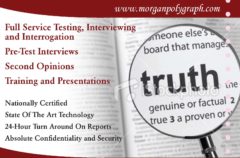
With a deeper understanding of micro expressions, you can significantly enhance the accuracy of polygraph results. Micro expressions are fleeting facial movements that reveal genuine emotions often hidden beneath the surface. By learning to recognize these subtle cues, you can better interpret the physiological responses recorded during a polygraph examination. This knowledge not only aids in detecting deception but also allows you to engage more effectively with subjects, leading to more reliable outcomes in investigative scenarios.
The Science of Micro Expressions
While many people may not be aware, micro expressions are brief, involuntary facial expressions that occur within a fraction of a second. These expressions reveal emotions that a person may be trying to conceal, making them a powerful tool for understanding human behavior. By recognizing and interpreting these fleeting signals, you can enhance your ability to discern truthfulness in a polygraph examination.
Definition and Importance
Across diverse fields, micro expressions serve as vital indicators of emotional states. They provide insight into a person’s true feelings, often contradicting their verbal communication. Understanding these subtle cues can significantly boost your skills in lie detection, ultimately improving the outcomes of polygraph assessments.
Neurological Basis of Micro Expressions
Any discussion on micro expressions must include the understanding of their neurological underpinnings. These expressions are connected to the brain’s limbic system, which governs emotions. When you experience feelings like fear or happiness, your brain rapidly processes them, leading to immediate facial reactions, often without conscious awareness.
It is important to recognize that micro expressions stem from deep-rooted neurological responses. These reactions are hardwired into your brain’s structure, allowing for an almost instantaneous communication of emotional states. This rapid processing highlights how you can effectively use your understanding of these reactions in situations like polygraph testing, where detecting incongruences between verbal and nonverbal cues can lead to more accurate assessments of truthfulness.
The Role of Micro Expressions in Deception Detection
Even seasoned professionals can benefit from understanding micro expressions, as they offer insights into a person’s true feelings during interrogations. These fleeting facial reactions occur in less than a second and can reveal concealed emotions or thoughts. By recognizing micro expressions, you can identify discrepancies between verbal communication and true intentions, enhancing your ability to detect deception and improve polygraph results.
Identifying Truth vs. Lies
Truth can often conflict with the spoken word, making it imperative for you to observe micro expressions carefully. When someone lies, their facial expressions might betray them, revealing emotions such as fear, guilt, or anxiety. By analyzing these subtle cues, you gain valuable insights that can help you differentiate between truth and deception.
The Correlation Between Micro Expressions and Stress Responses
Any indicator of micro expressions associated with stress can be invaluable in detecting lies. Micro expressions can signal a spike in emotional responses that accompany stressful situations, often linked to deceit. Understanding these cues will allow you to better interpret the psychological state of the individual you are assessing.
In addition to recognizing micro expressions, it’s important for you to consider the context in which they occur. Stress responses might vary based on individual circumstances, making it vital to approach each case with an open mind. A person’s unique emotional landscape can impact their expressions significantly; therefore, a holistic view combining both micro expressions and stress responses will ultimately enhance your ability to read their honesty more accurately.

Enhancing Polygraph Techniques
It is vital to incorporate micro expression analysis into polygraph techniques to enhance the accuracy of lie detection. By observing subtle facial cues, you can gain deeper insights into the psychological states of subjects during questioning. This Micro-Expression Extraction For Lie Detection approach can significantly improve traditional methodologies, providing a more comprehensive understanding of truthfulness.
Integrating Micro Expression Analysis
The integration of micro expression analysis into polygraph examinations allows you to identify incongruence between verbal and nonverbal communication. This technique enhances your ability to assess emotional responses and potential deceit, ultimately leading to more reliable outcomes in lie detection procedures.
Training Polygraph Examiners
Micro expression training for polygraph examiners can radically improve their interpretive skills.
This specialized training equips you with the ability to recognize and decode micro expressions, thus enhancing your effectiveness as a polygraph examiner. By focusing on these fleeting cues, you can develop a sharper intuition regarding the emotional context of responses, leading to higher accuracy during assessments. Emphasizing micro expression recognition will not only bolster your skillset but also boost the overall credibility of polygraph testing in your practice.
Case Studies and Real-World Applications
Despite the challenges in measuring deception, various case studies demonstrate the practical applications of micro expressions in polygraphs. These examples showcase how understanding micro expressions can enhance accuracy in lie detection:
- Case Study 1: A law enforcement agency increased their polygraph success rate by 30% after training staff on micro expressions.
- Case Study 2: In a corporate investigation, recognizing micro expressions helped identify a lying suspect within just 15 minutes, leading to quicker resolutions.
- Case Study 3: A pilot program in a prison setting reported a 25% reduction in false positives when integrating micro expression analysis with traditional polygraph methods.
Law Enforcement
Among the various sectors utilizing polygraphs, law enforcement agencies have particularly benefitted from training in micro expression recognition. Enhanced abilities to read subtle emotional cues have led to better interrogation outcomes and increased conviction rates.
Employment Screening
Against common belief, polygraph tests are increasingly employed in employment screening, especially in sensitive positions such as security and government roles. Your enhanced understanding of micro expressions allows you to assess candidates beyond their verbal responses.
Considering the high stakes in hiring for certain positions, employers have turned to micro expression training to refine their hiring process. By accurately interpreting candidates’ emotional responses during interviews, you can distinguish between genuine enthusiasm and masked dishonesty, leading to more informed hiring choices and reducing the risk of workplace misconduct.

Limitations and Challenges
Unlike other investigative techniques, the interpretation of micro expressions can be subjective, potentially leading to inconsistencies in polygraph results. Individual differences, context, and environmental factors can influence your assessment, making reliance solely on these expressions problematic. Additionally, the integration of micro expression analysis with traditional polygraph methods may pose practical challenges, as it requires thorough training and experience to accurately understand and apply this knowledge.
Variability in Individual Responses
Along with differing levels of emotional expression, you must consider that individuals can exhibit a wide range of responses that vary based on their personality traits and past experiences. This variability can complicate the process of accurately interpreting micro expressions, possibly leading to misinterpretations or false conclusions. Understanding these differences is necessary when analyzing responses during a polygraph examination.
The Role of Cultural Differences
After recognizing that cultural backgrounds significantly shape emotional expression and communication styles, it’s important to consider how this can impact the interpretation of micro expressions. You may encounter variations in nonverbal cues that are culturally specific, which could result in misreading intentions or emotions during a polygraph.
Consequently, you must approach micro expression analysis with cultural sensitivity to avoid drawing incorrect inferences. Familiarizing yourself with various cultural norms and nonverbal behaviors can provide you with a more comprehensive understanding of the context in which a person’s expressions occur. This awareness helps in distinguishing between genuine emotional responses and those influenced by cultural differences, ultimately enhancing the accuracy of your polygraph assessments.
Future Directions in Research
Your understanding of micro expressions can significantly influence the outcomes of polygraph examinations. Continued research into this relationship could lead to more effective interrogation techniques and enhanced detection of deception. Future studies may focus on refining the accuracy of micro expression analysis and integrating this knowledge into practice to improve accuracy and reliability in polygraph tests.
Technological Advancements
Around the globe, advancements in technology are enhancing the way micro expressions are captured and analyzed. Innovations in AI and machine learning are paving the way for automated systems that can detect subtle emotional cues more accurately than traditional methods. These developments could revolutionize the field of polygraph testing, leading to better-informed assessments.
Expanding Methodologies
For researchers, broadening methodologies can offer fresh insights into the interplay between micro expressions and polygraph results. By incorporating diverse approaches, such as cross-disciplinary studies involving psychology, neuroscience, and behavioral analysis, you can unveil deeper connections that may influence lie detection outcomes.
But a thorough exploration of these methodologies will require collaboration among various disciplines. Engaging experts from psychology and technology can foster innovative interventions that enhance the interpretation of micro expressions. This approach allows you to gather multifaceted insights, ultimately leading to a more comprehensive understanding of how these expressions affect polygraph accuracy and effectiveness.
Summing up
So, by understanding micro expressions, you can greatly enhance the accuracy of polygraph results. This knowledge allows you to recognize subtle emotional cues that may indicate truthfulness or deceit. By honing your observation skills, you can better interpret the physiological responses recorded during a polygraph examination. Ultimately, integrating your understanding of micro expressions with polygraph technology can lead to more reliable assessments and informed decision-making in various contexts, such as law enforcement and personnel evaluations.
